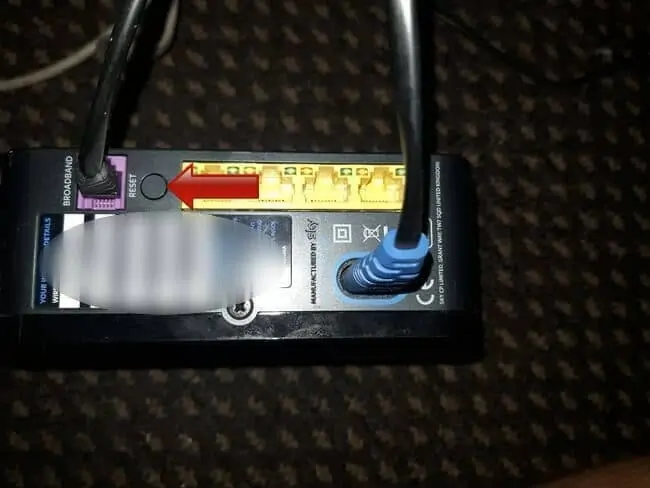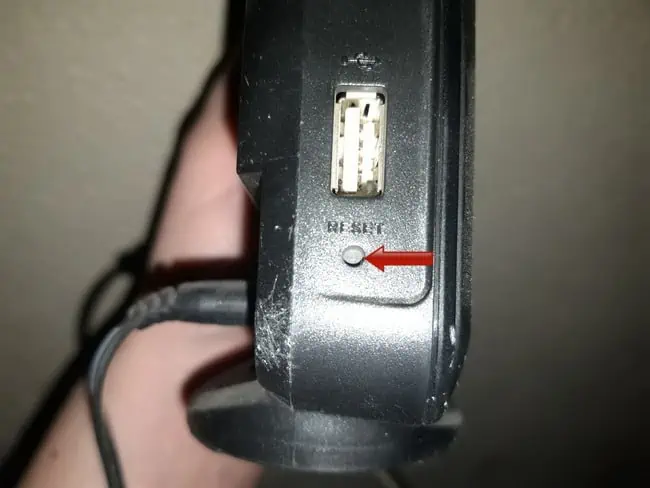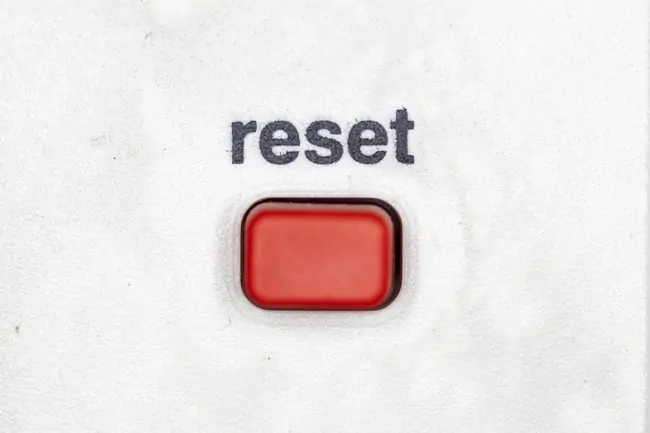Home internet users commonly need to reset their routers, but does doing this actually change the IP address of a router or of devices connecting to a router?
This can become a more obvious issue when we find ourselves having to continually verify logins to accounts because they think we are from a new location when we aren’t. We are logging in from the same place as we always do! What is going on here? Does our router change it’s IP address every time it is rebooted or reset?
The answer depends on what type of reset we are doing, but here is a quick summary answer:
As a general rule, quickly rebooting a router (soft reset) does not change it’s IP address, but factory reboots or ISP maintenance resets do change the public IP address issued to a router.
In other words, the harder the reset you do, the more settings get changed, including the IP addresses on a router.
Let’s break down the issue in more detail, differentiating between the different kinds of reboots/resets a router can be made to do, and how the public IP address can sometimes be changed in different cases.
Quickly Rebooting a Router Does Not Change The Public IP Address
Let’s cover the most simple and quick form of a router reset – when you simply push the protruding power/reset button somewhere on the router itself, to initiate a quick reboot/restart.
Something like this:

Doing a quick/soft reboot of your router usually leads to a short interruption in connectivity for 30-60 seconds, but it does not change the external IP of the router that is displayed and logged by sites when you log into accounts/emails etc.
In other words, if you just do a soft reset, your public/external IP used by your router should remain the same.
What About Unplugging the Router?
This is where we get into more nuance about the different types of reboot/reset/power cycle (see here for full comparison). But in general, actually fully unplugging your router from the wall and plugging it back in again is one step up from a quick reset button reboot, and is enough of a change to change the public IP:
If you unplug a router and plug it back in, your public IP address will usually change.
Your ISP will detect that the connection to the router has been broken, and issue it with a new public IP address once it comes fully back online.
In other words, any time there’s a full break in the network, this will usually be detected by your internet provider, and therefore your router will be given a new IP address once it restarts. The softest of reboots just pressing a button but leaving the router plugged in usually avoids this, but any kind of harder reset usually changes the IP address.
Factory Resetting a Router Will Change The Public IP Address
Now let’s turn to the more drastic form of a reset – when you actually do a full factory reboot of your router, to restore it to the same state it was when it was brand new and “out the box” (see here).
This usually involves pushing a pin or safety clip into a recessed reset hole somewhere on the router; something like this:

Pushing a pin into this reset hole for 5-30 seconds until the lights on the front blink or flash, and then waiting 2-10 minutes, is usually how you perform a total factory reset like this.
When you perform a full factory reset your router, all settings will be restored to default, and your router will also be issued a new public IP address, different to the one you used before the reset.
In some ways, doing a full default reset of your router is almost like installing your internet service all over again like the very first time, and your ISP treats it as such by issuing a brand new external IP address to that router/household.
Periodic ISP Maintenance Resets Will Change The IP Address
There is another specific instance when your router will change it’s IP address, and this is whenever your internet service temporarily goes down for maintenance, and then comes online again.
I know this first hand from experience because my ISP regularly undergoes maintenance late at night, meaning the service is temporarily down. And whenever I go back online, I always get email alerts whenever logging into certain accounts that a new IP address/location has been detected, despite me being in the exact same place I always am.
The reason for this must be that these periodic maintenance outages by my provider must also effectively reset the router, and lead it to be issued a brand new public/external IP address.
This is then detected when you log into some of your usual accounts under this new/different IP address, and they may ask you to confirm/verify these login even though you haven’t actually changed location at all, but your router has been issued a new public IP address.
The regularity that this happens with my ISP is actually quite annoying, because I keep having to verify logins over and over from exactly the same residence, as my router keeps getting reset with a new IP address by external maintenance, but I think it happens a lot less with other ISPs.
Some ISPs Offer Static External IP Addresses
If the constant changing of external IP addresses is annoying to you, and you are tired of having to keep verifying logins to accounts when you are in the exact same place you always are, then one option is to see if your ISP offers a static/fixed IP as part of it’s services.
This means that, for an extra fee, your ISP can ensure that your router is always issued the same external/public IP address. This will presumably carry over even when doing factory resets or when your service undergoes maintenance, though it’s best to confirm this with them when inquiring about static IP services.
It’s possible and easy to set a static private IP address on your router for individual devices within a household, but here we mean fixing the public/external IP address of your router in place, and for this you will need to contact your ISP.
Check your provider’s site for a static/fixed IP service. It’s normally offered on business internet packages, but can sometimes also be requested for residential packages. It can sometimes be quite expensive to get a fixed public IP though, and not all ISPs offer this.
Router Resets And Private (Device) IP Addresses
Everything we’ve spoken about so far in this article relates to the public/external IP address issued to a single router/household by an ISP. This is what is displayed whenever you check on one of those sites that displays your current IP address.
However, whenever using the IPv4 address protocol, then IP address are actually split into public and private ones, because under IPv4, there aren’t enough unique addresses to cover all devices globally.
Therefore your router uses Network Address Translation or NAT to convert public IP addresses to a private IP address range (often 192.168.0.1-254 or something similar), and these are the private IP addresses issued to individual devices connecting to a router on a home network.
But the bottom line on this is that on most home networks still, your devices actually have their own private IP address (eg. 192.168.0.31) that complements the public IP address issued to your router/household, with NAT acting as a bridge between the two types of IP address.
We assume that in most cases, readers are wanting to know whether the public/external IP address changes when resetting the router – this is what we’ve covered in the sections above – but let’s also cover what happens to the private IP address of individual devices after router resets:
- Quick/soft reboot – Should not change the private IP address. However, as long as you are using DHCP on your router, your device’s private IP will change periodically unless you lock it in place by reserving a static IP on the router. But just doing a quick reset does not normally change the private/device IP – this changes at set intervals determined by the DHCP Lease Time on your router.
- Factory/hard reset – This will change the public and the private IP addresses. No way around this – even if you have set a static private IP for a device on a router, doing a factory reset clears even this and you’ll have to do it again.
- ISP Maintenance outages/resets – Not 100% sure on this, but probably works the same as factory reset, and changes both the public and private IP addresses on a network.
